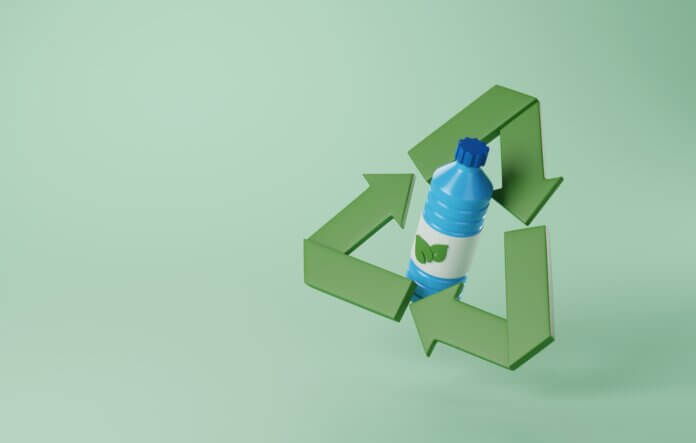How Circular Economy Pioneers Are Creating Zero-Waste Beverage Models
By Beth Rush
A circular economy involves the consistent reuse and regeneration of products, a key method for creating a more environmentally friendly product and consumption model. It’s been applied across numerous sectors, including construction, clothing, and electronics. The beverage industry is a new and impactful framework joining the stage.
The State of Beverage Waste
Beverages move fast on the market, but underneath their refreshing quality is a concerning carbon footprint. The sector accounts for about 3.8% of global carbon dioxide equivalent emissions across each stage of the supply chain.
Production and transportation are highly responsible, but it’s also worth noting that the industry is notorious for using single-use containers for packaging. Three of the top fast-moving beverage companies alone produced 138 million metric tons of plastic from 2000 to 2023. Imagine including the numbers for all other businesses and bars.
Bringing Circular Economy to the Equation
The circular economy is critical for future beverage models, as it can turn each drink into a learning moment about efficient production and waste management practices. It’s more than possible to make it the norm, and the environment is all the better for it.
Businesses will also benefit, as it fosters an environmentally conscious community. Around 44% of customers globally are more likely to buy a brand committed to sustainability, which increases engagement and revenue.
The Concept of Eco-Friendly Coffee As a Case Study
The existence of eco-friendly coffee is an excellent point of reference for how forward-thinking most brands are regarding sustainability and waste elimination strategies. Plus, any beverage producer can adopt these ideas.
Local Sourcing
Regarding production, local sourcing is a game-changer. Relying on the nearby economy can minimize environmental impacts from logistics and save time and money with transportation. Plus, you’d be supporting farmers and producers in your community.
Local sourcing doesn’t have to be limited to the ingredients of your eco-friendly coffee. It can also be applied to your packaging materials, the vendors you partner with and so much more. Bigger companies may have initiatives that promote local coffee production.
Closed-Loop Packaging
Closed-loop packaging in coffee means ensuring containers are always reused, recycled or regenerated. Jars and tins are excellent for those selling coffee grounds, as consumers can easily repurpose them.
Using more compostable materials for packaging already-brewed drinks is another way forward. Meanwhile, some cafes are offering reusable cups and mugs as the best option for already-brewed drinks.
A deposit return scheme incentivizes the return of containers and builds sustainable consumer habits. Coffee shops have already implemented programs offering discounts to customers who bring their own reusable coffee containers for drinks and refills.
Improving Water and Energy Use
Coffee production relies heavily on water and energy, but other methods conserve resources. For example, wet processing requires significant water, which becomes wastewater once the process is complete. Dry and semi-dry methods are possible alternatives that can still produce great coffee.
In terms of energy, exploring more renewable sources may prove beneficial. Solar dryers can help process grounds while reducing fuel use. Electric vehicles are also ideal for transporting and distributing coffee.
Reusing Coffee Grounds
Coffee grounds are typically discarded after they are brewed, but these by-products can actually be repurposed in a multitude of ways, like creating:
> Skin exfoliant: Coffee grounds are great for exfoliating the skin since they have antibacterial properties. In a bowl, mix the grounds with coconut, olive, jojoba, or another oil. You could also add Himalayan salt to improve your acne or psoriasis.
> Fabric dye: Skip buying fabric dye and rewet coffee grounds for an easy DIY dye. Let what you want to dye soak in the solution for a more even finish. Wash it with laundry detergent afterward to keep it fresh.
> Cleaning scrub: The antibacterial properties in coffee grounds can also make them a good cleaning scrub. Use them to remove hard-to-remove dirt buildup in the nooks and crannies of your home.
> Odor neutralizer: The smell of coffee is alluring as a natural fragrance. However, its ability to neutralize less-desirable smells is underrated.
Overcoming Obstacles in the Process
The circular economy is highly beneficial, but it’s natural to encounter challenges during the transition period. Here are several of them, and the solutions that accompany them:
> Cost: Changing production in a high-price environment can be challenging. In 2022, 70% of Americans saw inflation as a significant problem, and those concerns persist. However, directing those funds toward recycling costs and resource conservation is more cost-effective in the long term.
> Infrastructure: Beverage infrastructure concerns production, packaging, and distribution. Integrating sustainability can be a slow process, but it’s vital to prioritize at least the most impactful part of the supply chain. Generally, packaging is the best place to integrate a closed-loop system.
> Consumer behavior: Consumers are already looking to make their product consumption greener by supporting eco-conscious brands. Businesses should capitalize on changing consumer behavior by improving awareness. Start campaigns and initiatives to encourage your customer base to be more sustainable.
Implement More Zero-Waste Beverage Models
Creating eco-friendly coffee is the beginning of integrating the circular economy into the beverage industry. Water, juice, milk, soda, and other drink brands should follow suit and collectively transition to the zero-waste beverage model.
About the author: Beth Rush is the green wellness editor at Body+Mind, where she covers topics like the power of climate consciousness at all stages of education. You can find Beth on Twitter @bodymindmag. Subscribe to Body+Mind for more posts by Beth!
